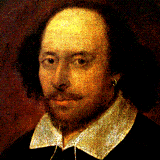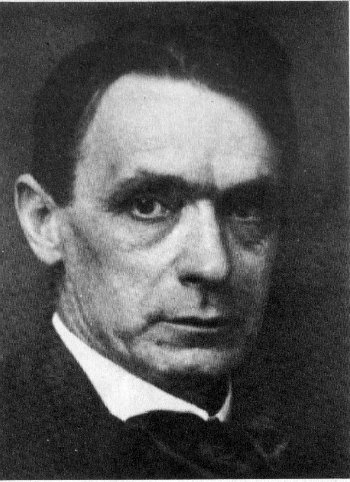|

Shakespeare

Kuhn

Steiner
|
Through and through
"a Western concept," imagination should be understood as "potentially extraordinary
consciousness--not just the dream stage, but the whole gamut of it-present
with ordinary consciousness" (RM 30). For Barfield, inheritor of
the Romantic, Coleridgian conception of organic
imagination, the term denotes "an ultimate mental activity that opposes,
and transmutes into a kind of aesthetic or mystical contemplation, that
absolute dichotomy between perceiving subject and perceived object on which
our practical everyday experience . . . is necessarily based" (xxx).1
Or to put it simply and concisely, imagination is for Barfield "the power
of creating from within forms which themselves become a part of nature"
(HEW 211).
Whereas the word
"''imagination' has come to mean, for most people, the faculty of inventing
fictions, especially poetic fictions . . . ,"2
for Barfield imagination "in its deepest sense . . . signifies that very
faculty of apprehending the outward form as the image or symbol of an inner
meaning . . . " (RM 19). With Shakespeare
he would agree that
as
imagination bodies forth
The forms of things
unknown, the poet's pen
Turns them to shapes
and gives to airy nothing
A local habitation
and a name. (quoted in
HEW 209)
As successor to the
throne once held by "inspiration,"3
imagination is the "needful virtue" of our time because the literalness
which supports idolatry is the "besetting sin" of the age (SA 162).
In imagination "we find ourselves in finding vision" (RM 30).
Imagination's theatre
of action is not, however, some subjective realm but the world itself.
(And so we find Barfield quoting with admiration historian of science Thomas
Kuhn concerning "transformations of the 'imagination that we shall
ultimately need to describe as a transformation of the world'" [HGH
83-84.]) It is "the most precious of all our possessions--the chosen one
of all our faculties to be our savior" (RCA 45).4
Barfield's concept
of imagination is indebted as much to Rudolf Steiner
as to Shakespeare and the great Romantics. For Steiner revealed the role
of imagination in the evolution of consciousness. Only Steiner," he observes
in the "Introduction" to Romanticism Comes of Age, "clearly apprehended
[imagination] as part, and but the first part, of a long, sober process
of cognition that may end in man's actually overcoming the dichotomy [between
mind and matter, self and world]--sober but involving a plus of self-consciousness
amounting to a mutation, since it presupposes no less than a crossing of
the stark threshold between knowing and being" (RCA 15-16).
Barfield's philosophy
of imagination is inextricably linked to his concept of polarity.
In a memorable passage from "Matter, Imagination, and Spirit" he explains
the relationship. As human beings, he writes, "we live in [the] abrupt
gap between matter and spirit; we exist by virtue of it as autonomous,
self-conscious individual spirits, as free beings." This gap cannot be
ignored with impunity, however; indeed, "because our freedom and responsibility
depend on it, any way that involves disregarding the gap, or pretending
it is not there, is a way we take at our own peril." The existence of this
gap makes possible--makes necessary--imagination:
Now imagination
does not regard the gap; it depends on it. It lives in it as our very self-consciousness
does, in this case not as a small helpless creature caught in a trap between
the two, but rather as a rainbow spanning the two precipices and linking
them harmoniously together. The concern of imagination is neither with
mere matter nor with pure spirit. It is thus a psychic, or a psychosomatic,
activity. On the other hand, if we are seeking to have to do with spirit,
it is worse than useless to try to approach it by way of scientific investigation-at
least as the word 'science" is used today, for science is avowedly based
on mere perception, and in mere perception it will always be matter we
are having do with and never spirit. Indeed mere perception is itself the
gap between matter and spirit and, whatever else one can do with a gap,
one cannot use it as a means of crossing itself. (RM 150)
Because "the images
begotten by [it] are alive and creative, and have a sort of germinating
power of their own," the rainbow of imagination thus provides the means
to recover, this time self-consciously, with full human awareness, the
powers at work in the creative universe: "When true imagination is at work,
the same power is operating in man as operated, in the Beginning, in the
creation of the world; only now it flows from an individual mind, and in
association with what Coleridge called the 'conscious will'" (RM
89).
| See in particular
"Imagination" (HEW 196-215), "Imagination and Fancy, I & II
(WCT 69-91), "Imagination and Inspiration" (RM 111-29), "Matter,
Imagination, and Spirit" (RM 143-54), and Poetic Diction,
passim. |
1In
"The Rediscovery of Meaning" Barfield offers a concise summary of Coleridge's
position:
Thus it was held by Coleridge that the
human imagination, at its highest level, does indeed inherit and continue
the divine creative activity of the logos (the 'Word' of the opening verses
of St. John's Gospel) which was the common origin of human language and
consciousness, as well as the world which contains them. Out of the whole
development of the romantic movement in Europe at the turn of the eighteenth
century and in the nineteenth a conviction arose in these circles that
man's creative imagination can be applied, not only to the creation and
contemplation of works of art but also in the contemplation of nature herself.
(RM 19)
|
| 2"Imagination,"
Barfield hastens to remind us, "is not the fenced preserve of poetry, or
even of the fine arts in general; and no one saw that more clearly than
George Eliot, when she remarked, in Daniel Deronda: 'Here undoubtedly
lies the chief poetic energy:-in the force of imagination that pierces
or exalts the solid fact, instead of floating among cloud-pictures'" (HGH
80). |
| 3As
Barfield observes in Speaker's Meaning, "Perhaps all our endeavors
to say something fruitful about imagination can best be seen as a struggle
to reject the old concept of inspiration--and yet somehow retain it--to
reject the old superindividual psychology and at the same time to develop
an individual psychology which is viable for the phenomenon of art . .
." (SM 80). |
4Though
his primary emphasis is on imagination as a power to transform the world
of perception, it should be noted that Barfield also detects the existence
of a power--a much needed power--he calls "moral imagination." In "Matter,
Imagination, Spirit," he distinguishes it from other forms of imagination.
The extent to which we perceive
[the] body as mere matter, and the extent to which we perceive it as spirit,
will depend on the degree of imagination with which we are perceiving.
We may call this 'moral imagination,' to distinguish it from the aesthetic
imagination which is concerned with the perception of nature. To the extent
that we experience another's spiritual activity in speech, in gesture,
in the mobility of his countenance, and so on, the same mode as our own-and
thus af it were our own-we are exercizing our moral imagination. (RM
151)
|
|


